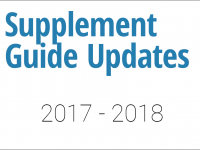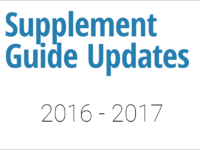I recently released the Official Supplement Guide for Caffeine, an in-depth look at how caffeine affects performance (its ergogenicity) as well as information on its mechanisms, side effects, and dosage. After I release these guides, however, I like to also release a more reader-friendly summary version where I highlight the information most climbers will find particularly interesting or relevant.
If you read the entire caffeine guide, this summary won’t necessarily tell you anything new. I do hope, however, that it might put some of caffeine’s effects in perspective. Caffeine is an interesting drug—the world’s most popular—and it’s important to keep in mind that it behaves like a drug, and that not all drugs affect all people equally.
Caffeine the Upper
If you read the supplement guide, you know caffeine has a number of ergogenic benefits—it increases strength and power, improves endurance, and helps you resist exercise-related pain and fatigue. These are certainly important effects, but they only exist downstream from a couple, much more important effects: improvements in focus and mood. Yes, caffeine can help you climb harder (or run longer, or lift more, or cycle faster), but it does so only because it makes you happier and more focused and not because it directly affects the muscles or energy.
This leads to an important consideration: if caffeine does not improve your mood or focus—if it makes you jittery and anxious—then it’s probably not going to improve your performance, either! I say “probably” because mood, focus, jitteriness, and anxiety are not mutually exclusive; you can be generally more focused while also jittery and anxious as well. By and large, though, those who get the most benefit out of caffeine are going to be the ones who feel the best while taking it.
If you count yourself among the latter group, then there’s a second thing that’s important to consider as well, which is that caffeine affects all individuals in the same manner (it has the same mechanism). And since caffeine is a 100% foreign molecule (we don’t produce it ourselves), we can expect caffeine-naive users to have the capacity for equal effects. More simply put: if you get anxious or jittery on caffeine, it’s probably not because you’re destined to feel that way, it’s probably because you’re taking too much. More on this later.
Caffeine Habituation Only Augments Effects
In studies done on caffeine, there is no firm consensus on whether habituation affects caffeine’s ergogenicity. Based on what I said above, I think there’s a good reason for this: the level of habituation can vary greatly individual-to-individual, and strongly affects how much caffeine affects the individual in question. If you typically consume only 8 ounces of coffee a day (about 90 mg of caffeine), you will certainly be habituated to a greater extent than the caffeine-naive user, but also not nearly as much as the individual who regularly consumes 8 shots of espresso (about 400 mg of caffeine). Subsequently, when these individuals consume caffeine, it will provide magnitudes of effect that will magnify or diminish its ergogenicity.
What I will say is that it’s likely that habituation does affect caffeine’s ergogenicity, but only to the extent that it decreases caffeine’s mood-improving and focusing effects. If you drink caffeine-containing beverages daily and still get buzzed, you needn’t worry about losing out on all of caffeine’s benefits. On the other hand, if you need caffeine just to return to “normal” and don’t feel buzzed at all after drinking it, then you’re probably not going to benefit much from caffeine—at least aside from the “benefit” of not being sluggish from caffeine withdrawal!
Caffeine’s effects aren’t binary; they’re a sliding scale. The more habituated to caffeine you become, the less benefit you will glean. The more naive to caffeine you are, the more benefit there is to gain. Most people can consume at least some caffeine daily and maintain some of its benefits, but there are also times—such as competitions or project days—that it might be worthwhile to dehabituate from caffeine first so as to get maximum benefit, a process which takes 4-7 days on average. Weigh your priorities.
Genetics Determine Metabolism, Not Effect
The genetics behind caffeine metabolism have become a hot topic of late, and I expect to see a plethora of studies in the coming decade examining the effects of the CYP1A2 gene on caffeine and performance. As far as we know, though, genetics only affect the speed of caffeine metabolism, not its effects on the central nervous system. In other words, whether you metabolize caffeine quickly or slowly, the caffeine molecule always acts as an adenosine receptor antagonist, and that always has the same predictable effects in humans.
That’s not to say that caffeine metabolism speed doesn’t matter—it matter quite a bit! If you break caffeine down slower than average, the same amount of ingested caffeine will have a stronger effect because there will be more circulating in your system at any given time. Since most people are “normal” metabolizers of caffeine, slow metabolizers might find themselves burdened with undesirable side effects like anxiety and jitters when consuming what for most people is a “normal” amount of caffeine, and will need to consume less to get the same sort of benefit (whether this is a blessing or a curse depends on how much you like coffee and tea).
If you get anxious or jittery on what seems like a small amount of caffeine, try an even smaller amount (provided you want to try to benefit from it). Chances are you’re a slow metabolizer and that less will go further.
There’s No Single “Effective Dose”
Most studies done on caffeine and performance use a dose of 3-6 milligrams per kilogram of bodyweight (about 1.4 milligrams per pound). In the official supplement guide, I write that there may be a lower threshold for caffeine’s effects around 2 milligrams per kilogram of bodyweight, but I’m going to modify that slightly here and say this: there’s no single “effective dose”; there are only doses that make you feel good, make you feel bad, and make you feel nothing.
The effective dose for caffeine is the amount you need to feel perky, focused, and motivated. The research tells us that for the majority of people—people who are mostly “normal” metabolizers, remember—this is about 3 milligrams per kilogram (more doesn’t tend to lead to better results, even if it’s a common dose in studies), or about 16 ounces of regular-strength drip coffee (475 milliliters). Slow metabolizers will need less, perhaps considerably less.
There are two types of ineffective doses: those that make you feel bad (anxious, jittery, or worse) and those that are too small to affect you. The former is much more common, and likely to negatively impact your climbing since anxiety directly affects perceived exertion. The latter is not as common, but does happen. In the end, the goal is to maximize your buzz without going too far.
If you’re caffeine-naive, try 3 milligrams per kilogram to begin with and see how it affects you. If you feel good while climbing or training, then mission success. If you get anxious or jittery despite climbing or training, then scale it back some next time.
Daily Caffeine Is for Training—But Dehabituate for the Big Stuff
Caffeine is a normal part of many people’s days; I’m not asking anyone to give that up! As mentioned earlier, you can absolutely gain some benefit from caffeine and still consume it daily—though you do need to consume it near to exercise for it to be effective, of course.
There are also times when you really want to maximize your edge, though, and when daily caffeine won’t cut it. For these times, you should take the 4-7 days to dehabituate so you get the most out of caffeine on the big day. Dehabituation isn’t fun—expect headaches and grogginess—but if your project or competition is big enough, it’s worth it. Painkillers are your friend for those first few days when headaches will be the worst!
It Doesn’t Really Matter How You Get Your Caffeine
I remember a textbook for a nutrition class I took as an undergrad (this is over a decade ago, now) saying that caffeine is only effective in supplement form (anhydrous caffeine), not when consumed in coffee or tea. I don’t doubt that there was some small amount of evidence for this claim back then, but its unlikely and quite frankly implausible. Caffeine is caffeine; it has the same effect on the brain no matter how you get it. The hypothesis that caffeine-containing plants also contain compounds that impair performance (and in the same way) is unlikely.
More recent research doesn’t back the anhydrous-only hypothesis; studies that directly compare the two (such as this one) find that both are effective, and studies that only use coffee or only use anhydrous caffeine obtain similar results. Therefore, if you have a preferred method of caffeine delivery, don’t feel obligated to change it.
Anhydrous caffeine does have one benefit over other forms, however: it’s vastly easier to measure accurately. Coffee and tea can vary in caffeine content depending on source, amount used, and length of time brewed. When you read about the amount of caffeine in an average cup of coffee or tea, it’s exactly that—average. On a cup-to-cup basis, the actual caffeine content can vary dramatically.
As a example, one study found that 16 ounces of coffee (475 milliliters) from a variety of different shops contained a range of caffeine from a low of 143 milligrams to a high of 259 milligrams (with an outlier of 564 milligrams!). It also found that the caffeine content of 16 ounces of coffee from the exact same shop could vary significantly day-to-day, so differences in caffeine content can’t be explained only by different roasts, brew strengths, and times, but differences in caffeine bean-to-bean in the same bag.
Again, this might be of more interest to those who get anxious or jittery because anhydrous provides total control; if a given dose makes you jittery, it’s easy to accurately reduce. Normal metabolizers will be more likely to effectively “absorb” the differences in caffeine they encounter.
One final note: if you purchase caffeine supplements, always buy capsules or tablets, NOT powders! Loose, powdered caffeine is easy to accidentally overdose on (it takes less than a tablespoon) and simply not worth the risk.
If It Makes You Feel Good…
Caffeine is a drug. It works like a drug, and when it works, it feels like a drug. Most drugs don’t provide particularly useful effects performance-wise (if they’re not downright detrimental), but caffeine does, and you can harness those effects and perform better.
Keep in mind that caffeine only works when it makes you feel good, though—that’s its primary effect (along with focus)! If caffeine doesn’t make you feel good, you’re not going to gain many (or any) of its benefits. Thus, gaining the benefits of caffeine revolves around one thing, and one thing only:
Finding your “feel good” dose.
Modifiers of caffeine’s effects like genetics and habituation don’t affect the molecule’s biochemistry, just the dose it takes to achieve certain effects (positive and negative alike). Slow metabolizers need less caffeine; habituated users need more. At some point, habituation will make it nearly impossible to trigger caffeine’s positive effects, but most people can drink at least some caffeine daily and not become overly habituated, and most slow metabolizers should be able to find an effective, lower dose of caffeine.
When we’re happy and motivated, we climb better and harder—so find the dose of caffeine that gives you that feeling, and there’s not much more to it than that!














